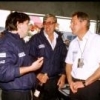You must remember that safety cars are used for different reasons in different countries.
Whilst I do not want to see marshals being put in danger, there are times when waved yellows would be sufficient to allow the removal of debris or indeed cars, without using a safety car. But these days it is well within the capabilities of electronics wizards to equip every car with a button that, when pressed, would limit the car to a reduced constant speed, thus if something needs to be done, ALL cars would be going at the same speed and thus, gaps between cars would be maintained.
Here, hang about, they've already got one - it's the pit lane speed limit button, so why don't they use it?
Granted there may be situations where a safety car would have to be employed but removing a few bits of debris could be done safely if cars were going slowly.
My point about different countries refers to the U.S.A where a full course yellow for a sweet wrapper on the track is used simply to close the field up to improve the spectacle.
I came up with the identical solution on another forum, only to be howled down by the majority. Apparently, even the pit-lane speed would be too fast for the marshals to have time to effect the clearing-up. The forum in question is widely frequented by racers, officials and marshals, so I bow to their knowledge.
The point I was trying to make was the same as your own - keeping the gap constant when there is a problem not of the leader's making. It's totally unfair for a driver who's leading by a good margin with two laps to go, and then finds his rivals bunched up behind him, possibly with a less well-worn set of boots. (The leader, that is).
The bigger picture is , as usual, TV schedules. Nobody wants to see anyone injured (or worse), but surely there must be a happy medium?



























